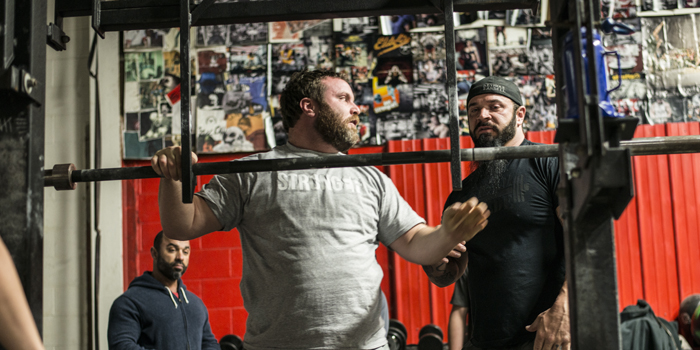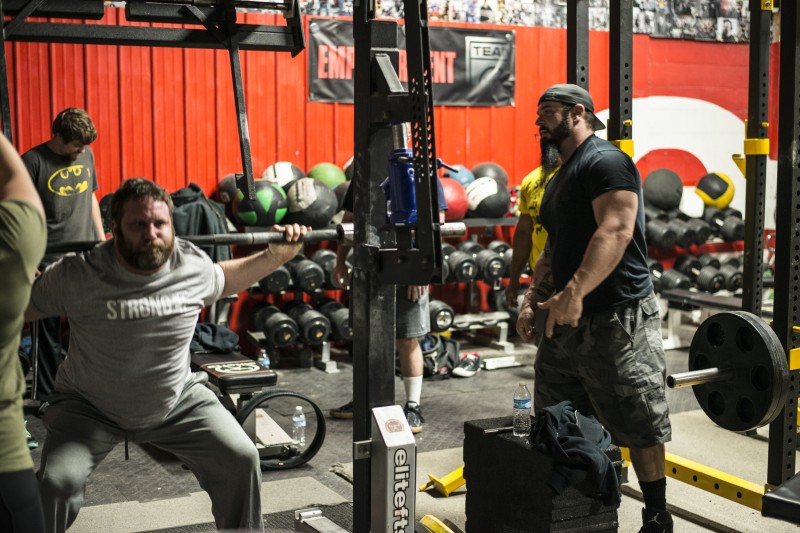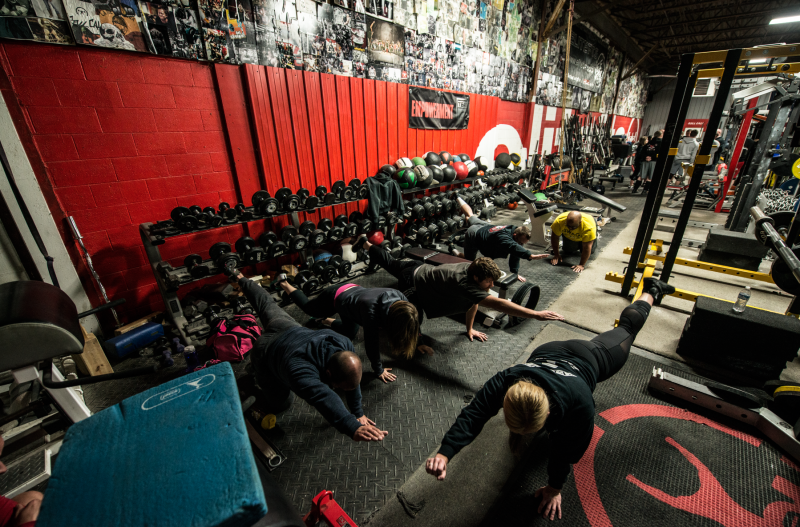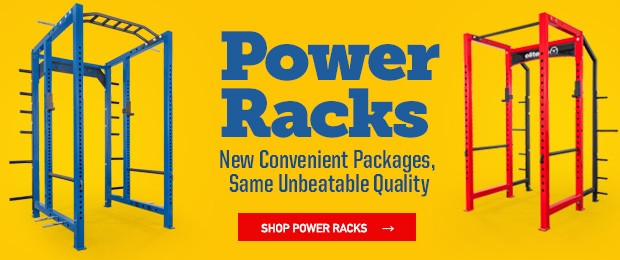
This article is based on a presentation I did in Atlantic City at the Glazier/PGC Conference, Friday April 28th. I’m better at typing than I am at speaking (working on that) so I decided to type out some of the key points of my discussion on the topic.
Training Considerations
If I’m talking anything about strength training and programming, I feel like it's necessary to touch on these briefly. This includes time, space, equipment, number of athletes in the room at once, training age of groups and individuals, and the have to do vs. the nice to do as a strength coach. We can talk about the benefits of strength training and we wouldn’t have jobs without all the benefits we can list, but the bottom line is that our athletes have to play their sport. They don’t have to strength train with us (I heard this first from Chad Wesley Smith). When you keep that in mind, it helps release the emotions from exercises. Another way to think about it: the stimulus (exercise) doesn’t matter. We want the adaptation that will allow athletes to get bigger, stronger, and faster.
Why Do We Have Progressions and Regressions?
One reason we have these in place is because we want to have systems for as many aspects of what we do as possible. This comes from the book, “E-Myth,” which discusses why small businesses fail. They fail because too much falls through the cracks and nobody knows exactly how to do all of the processes that need to be done. Coach Ron McKeefery wrote a book, “CEO Strength Coach,” which I have not yet read, but—based on hearing him talk about it—I believe it’s the same kind of story only for strength coaches. This also helps with consistency. My assistant and I know if we have an athlete or team who needs to progress regress, we will go through the same process. It also helps when we have interns to be able to show them this process.
RECENT: Your First Summer of Planning — Schedule and Program Setup as a New Coach
Another reason is for development purposes. We don’t have anybody that will be going pro before they graduate, so we have 4-5 years to slow cook our athletes. We also want to develop properly throughout each off-season. The following are variables we progress in certain ways throughout an off-season:
Intensity – Low to High
Force – Low to High
Speed – Controlled to Fast
Balance – High to Low
Teaching – High to Low
Lastly, in terms of the why, athletes will have limitations. We always want to be able to get a training effect in one way or another. When we can easily regress a movement, we can get a training effect even if the athlete can’t perform the same move with high enough quality as everybody else in their group.
What – Progressions and Regressions
I don’t think its as important to show you what our progression model is, as it is to emphasize the importance of having a system so that the “how” is easier. It will be different for everybody based on the training considerations. If we had SS Yoke Bars or a football team, stuff would probably change.
While at this clinic, we were listening to another speaker, Coach Gingerelli from Seton Hall. He was talking about implementing the big three lifts into a program. An attendee was hell-bent on this progression he got a couple years ago from another collegiate coach, going on and on about the specifics and how great it was. I didn’t want to hijack the presentation any more than this guy was, but I should have said, “it's great that you’ve found something that works for you. Everybody will do it a little different and as long as you have a system in place for treating athletes like the individuals they are, you are probably more right than wrong. Please shut up and let the guy in the front of the room talk."
I’ve personally seen a handful of different progressions to get athletes to squat better. So there is probably half a dozen ways to progress through the hinge, single-leg work, pushing and pulling, and even more for jumping, throwing, sprinting and agility work. Just Joe Kenn all this stuff: absorb, modify, apply for your situation. Nobody can tell YOU what is best for YOUR athletes until they are in the weight room with you and know all that is going on with YOUR situation.
How We Implement Our Model
Based on the training considerations, we will start a group with an exercise somewhere within our progression. To give some more context, I’m talking in the fall. Off-season training day one, we may start everybody with a barbell back squat (AKA squat). So after going through a refresher of some key points on what we’re looking for, everybody gets started. We see an athlete with their weight getting forward, heels coming off the ground a little. Not something that would surprise a strength coach on day one, whether it’s a freshmen or returner.
Step 1: After seeing something that is off, cue them to fix it.
At this point, we’ll talk to the athlete, tell them to try to sit back, keep their heels down on the next set. If they take the cueing and we are happy with the form, problem solved for today. We will probably have to continue to cue that athlete, but it looks like they can properly squat. If the cueing did not help…
Step 2: Attempt a mobility exercise.
Now we are looking for what is going wrong. We will then have an athlete perform a mobility drill on the area we think could be causing this improper movement. In terms of the example, it will likely be an ankle mobility drill. So we tell the athlete to perform this drill before their next set. If the subsequent set looks better, we know that ankle mobility is an issue and we will set a plan with that athlete to alleviate that issue. If the exercise doesn’t get better…
Step 3: Regress the movement.
Give the athlete another movement to do so we can get a training effect. We’ve spent enough time working with this individual that day while there are anywhere from 8-23 more athletes that could be in the room. Please be aware that while these three steps are being done, everybody else is putting in that work and we have to have our eyes on all of it. That’s why when we get to this point, we regress and get some training in. We don’t have time to fix everybody, but we will have a conversation with that athlete at the end of the session and maybe look at some other movements or mobility drills to give us a better idea of why they can’t get into certain positions.
We’ll give them homework, whether mobility drills prior to practice or some static stretching at night before bed. We may check in with their athletic trainer to see if they have had any movement issues or previous injury that could cause their inefficient or lack of movement. One thing I want to make clear: if there is pain with any movement, get the athlete to your trainer, whether it's during the exercise or even a mobility drill. We are coming from an FMS background at all times; every single movement or exercise is a screen. We provide something else to correct a movement or exercise when necessary but if we can’t provide an immediate impact on movement with drills we know, we will get with a trainer or our PT for help. We are neither of those things and we don’t try to be.
One of the last things I discussed is kind of a new thought and I’d really like to get as much feedback on it as possible. It is the difference between how you work with teams in-season, when they have a structured schedule vs. in-season when they have an unstructured competition schedule. For example, football, track, and swimming would be a structured schedule because they compete on the same days, or close to the same days, every week. Unstructured would be basketball, soccer or baseball, who could play eight games in 20 days or three games in three days, depending on the time of year.
Our progressive and regressive model allows us to regress certain movements as we get further along in an unstructured schedule sport. We do this because of the accumulated fatigue that these sports have, which is higher than a single competition a week sport. I feel as though you can vary loads enough in single competition a week sport so you can continue to use high enough load to elicit a positive response throughout the season. I do not think I could do this with unstructured schedule sports, as there comes a time when we have to cease our squats and bench presses (or whatever high intensity exercise you use). This happens because there are too many games throughout a time period and then we are two days out from a big game when we can’t take a chance on making a team sore. Or they come back from Christmas break and have two days to prep for three games in six days and we are in the same boat because we know what practice will be like (hard). We will always make every attempt to keep that range of motion, whether its with a different implement or just during a warm up, but we will move to other means, with less overall intensity (squats to step ups), with the unstructured schedule sports.
If anybody would like to see our progressions, I’d be more than happy to discuss, but I really don’t think they are anything out of the ordinary. Again, more important is the why, and then the how you implement them within your program.
Bobby Fisk is the Head Strength and Conditioning Coach at NJIT. He can be reached at fisk@njit.edu.











